Can you roll a basketball on the floor so that the ball comes back to the same position, but the orientation of its pattern has changed? Yes, you can, and after a few tries you will find out that the final orientation of the pattern is determined by the path traced by the ball on the floor. Quantum systems behave pretty much the same way: when subjected to a slowly varying external field, they acquire a phase that depends on the path they trace in their Hilbert space, that is, a geometric phase. In this work we have studied what happens when the external field is itself a quantum system, namely, a harmonic oscillator which can be populated with any number of photons. Instead of varying the state of the field, we prepare the field in a given state and slowly vary its coupling to the system. What we find is that a geometric phase is acquired even when the field is in the vacuum state, a result that has no semiclassical explanation but is correctly predicted by a full quantum theory. Our ability to control this phase opens new possibilities for the coherent manipulation of hybrid atom-cavity systems, with direct implications for quantum information processing. The results are published in Science Advances.
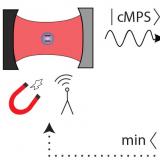
Exploring Interacting Quantum Many-Body Systems by Experimentally Creating Continuous Matrix Product States in Superconducting Circuits
By employing a fully controlled cavity quantum electrodynamic system made of superconducting circuits, we experimentally create matrix product states, a class of states that has proven to be extremely powerful as a variational ansatz for numerical simulations. We create 1000 such quantum states and efficiently probe their correlation properties to determine an approximation to the ground state of a model describing a gas of interacting quantum particles. Having physical access to the simulated ground-state wave functions enables us to also probe higher-order correlation functions beyond measuring the ground-state energy. The experimental data are in good agreement with the exact solution over a wide range of interaction strengths of the model.
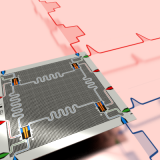
Digital Quantum Simulation of Spin Models with Circuit Quantum Electrodynamics
Quantum simulations are expected to vastly outperform classical simulations when modeling the dynamics of interacting spin systems. Researchers have used a digital quantum simulation to show that spin dynamics can be studied and predicted, which lays the groundwork for applications in quantum magnetism and strongly correlated systems.

Observation of Dicke superradiance for two artificial atoms in a cavity with high decay rate
We realized a two-spin "Gedankenexperiment" suggested by Dicke in 1954 using a system of two individually controllable superconducting qubits weakly coupled to a fast decaying microwave cavity. We demonstrate superradiance of two emitters both in time and by reconstructing the density matrix of the emitted field. The results of this work are published in Nature Communications.
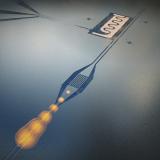
Microwave-Controlled Generation of Shaped Single Photons in Circuit QED
We have implemented a scheme for generating single microwave photons with a tunable shape in superconducting circuits. The experiment describing the fully microwave-controlled shaping process is published in Phys. Rev. X .
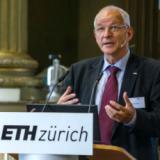
Making use of spooky phenomena
ETH President Ralph Eichler's final Lokaltermin event focused on a topic close to his heart: together with five other experts from ETH Zurich, he gave representatives from the worlds of business, politics and science an insight into the unusual world of quantum physics and explained how it may be used commercially in the future.

Open Professor Position in Quantum Engineering at ETH Zurich
ETH Zurich advertises a tenure track assistant, tenured associate or tenured full professor position in Quantum Engineering. Check out the advertisement and apply online using the link below. Other links provide information on the ETH Zurich Quantum Science and Technology environment, the Departments of Physics and Electrical Engineering and the ETH Zurich clean room infrastructure.
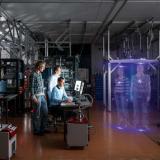
ETH Zürich Quantum Engineering Initiative
The Baugarten Stiftung has facilitated a strong start to the “Quantum Engineering Initiative”. This pioneering commitment to the ETH Zürich Foundation enables two pieces of high-tech laboratory equipment to be acquired, representing the next vital step in the production of scalable basic elements in quantum physics systems.
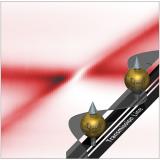
Photon-Mediated Interactions Between Distant Artificial Atoms
We demonstrated exchange interactions, superradiant states and subradiant states for two qubits placed two centimeters apart in an open one-dimensional space, as published in Science online.
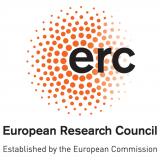
ERC Advanced Grant
An ERC Advanced Grant was awarded to Andreas Wallraff by the European Research Council (ERC) for the project "Superconducting Quantum Networks". The newly received Grant follows up the ERC Starting Grant that he won in 2009.



